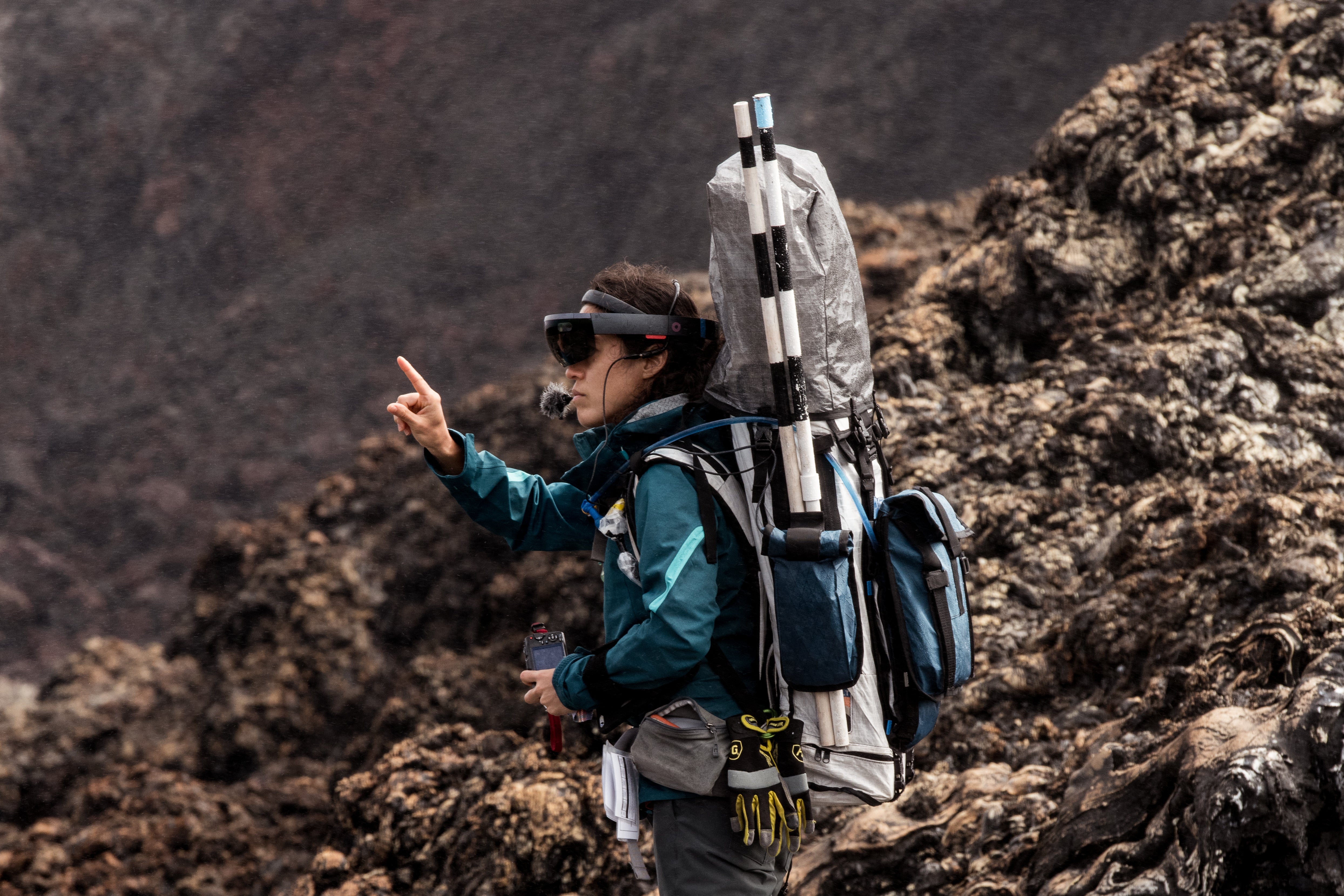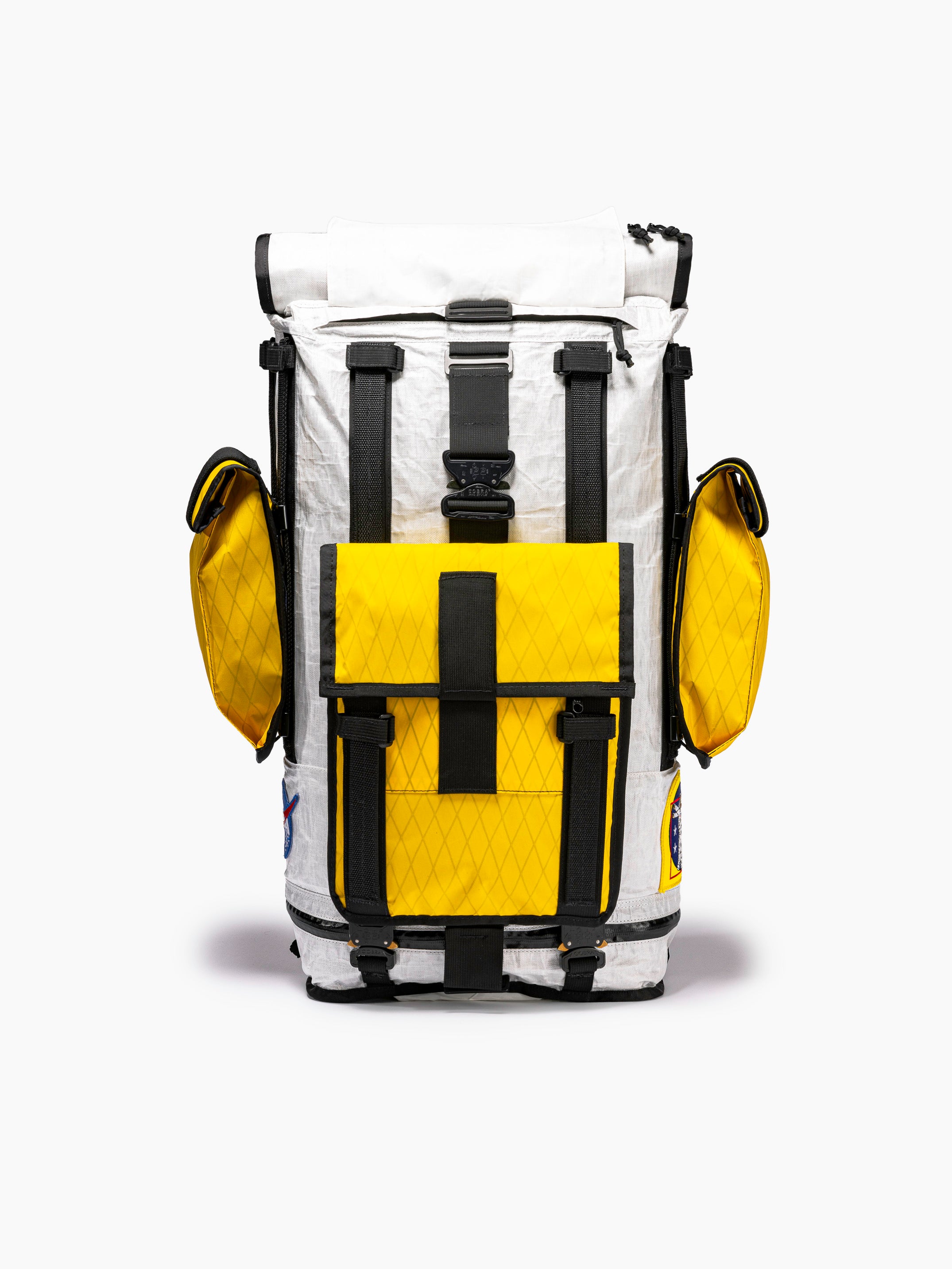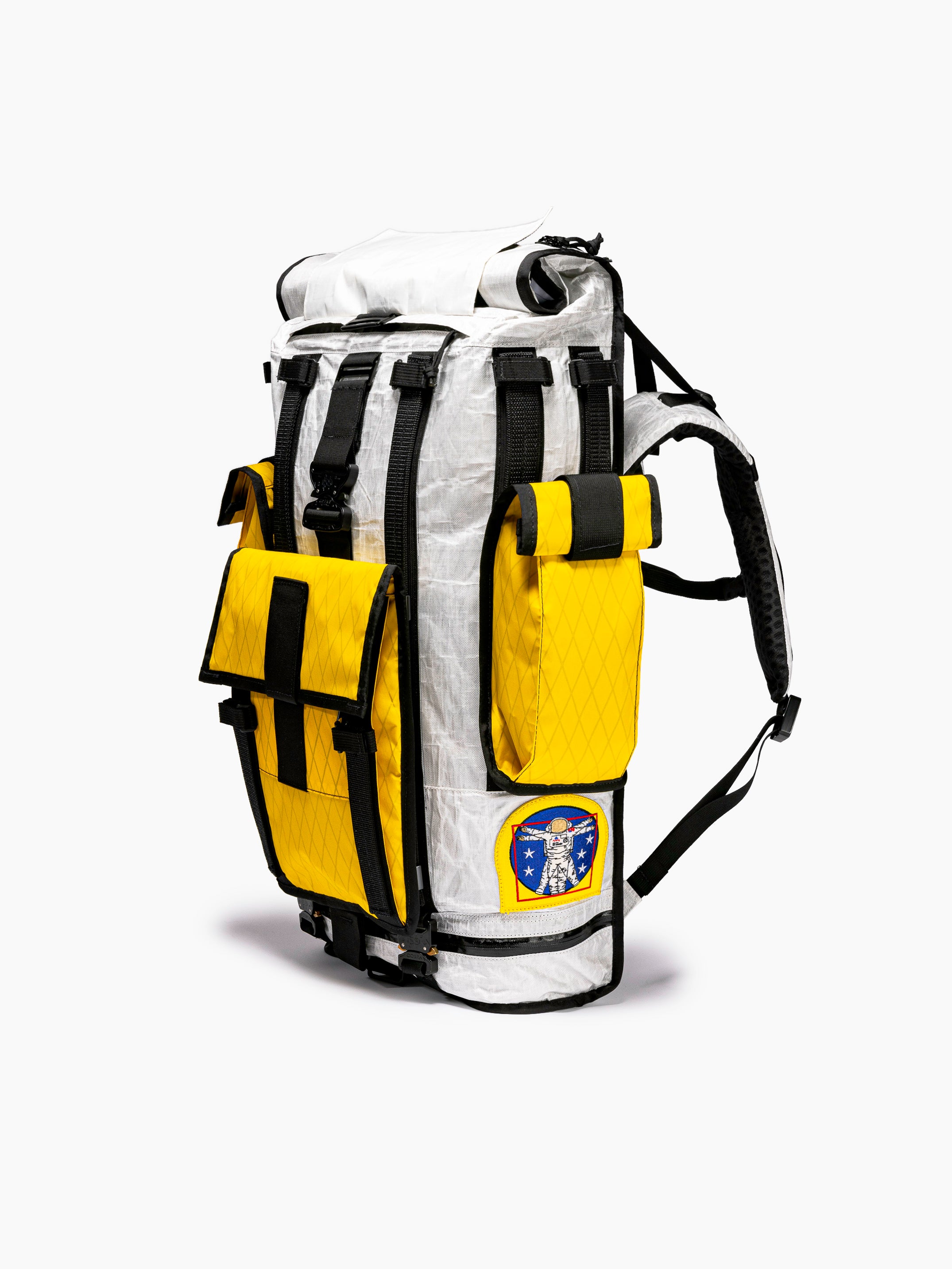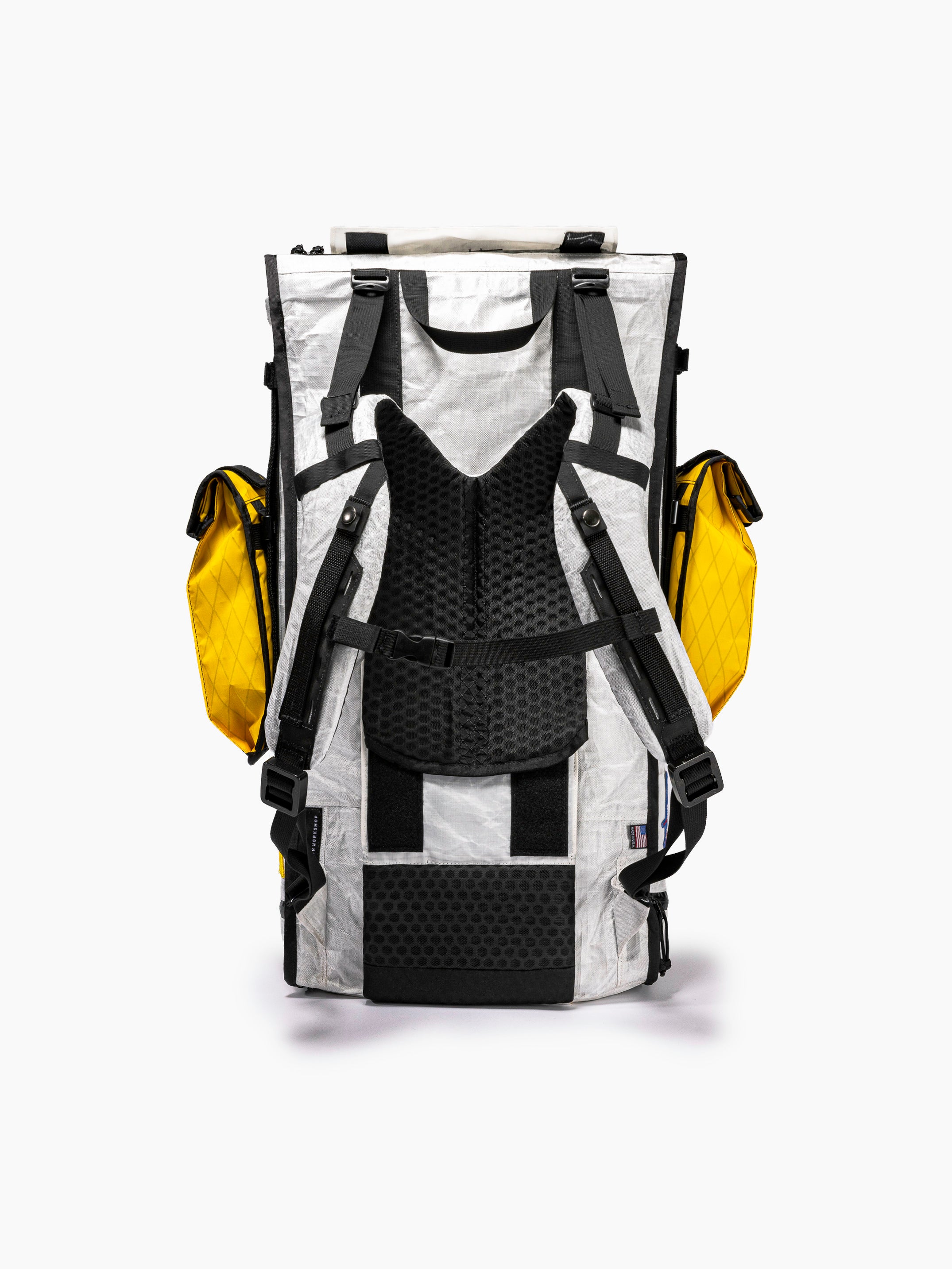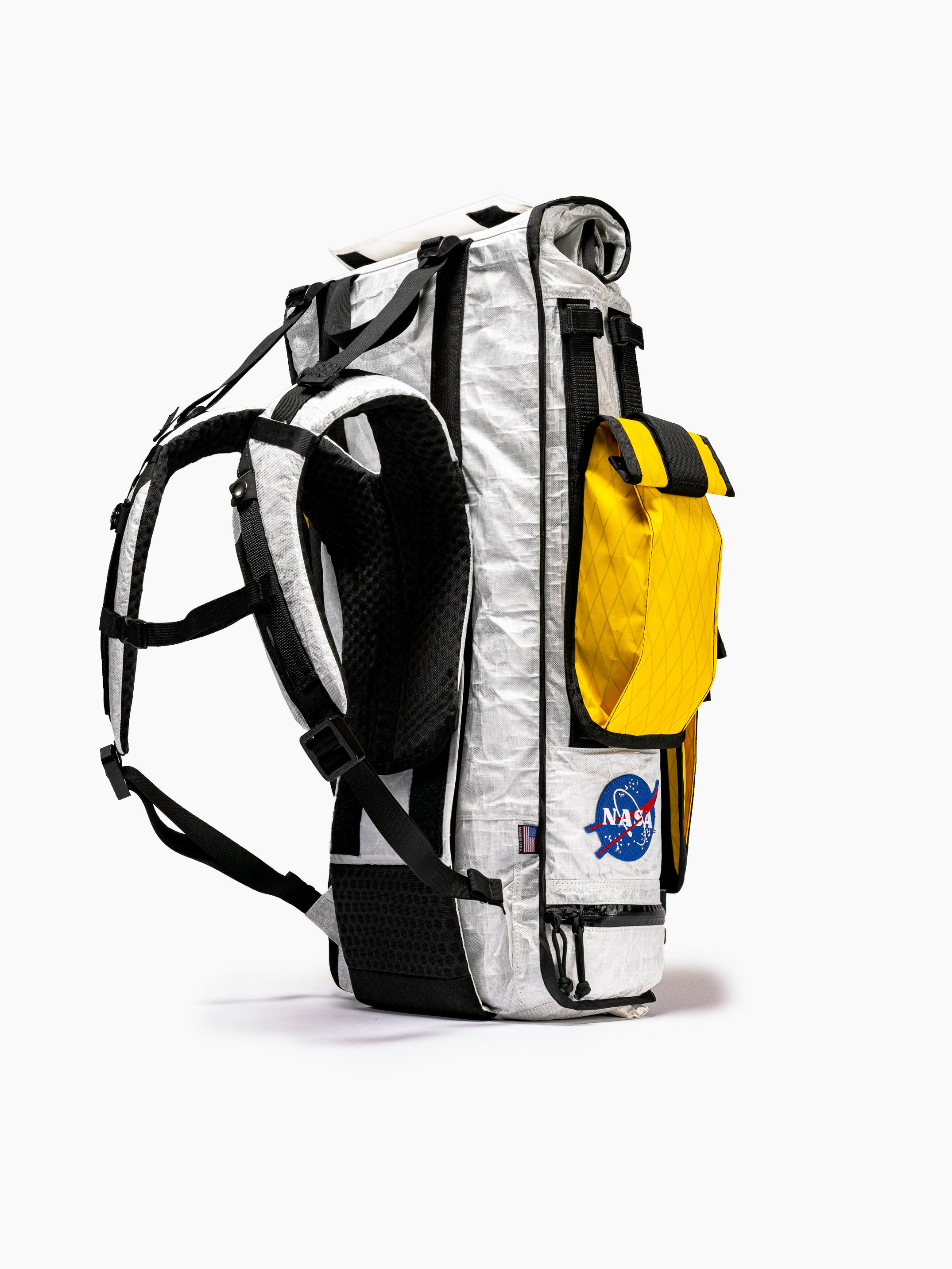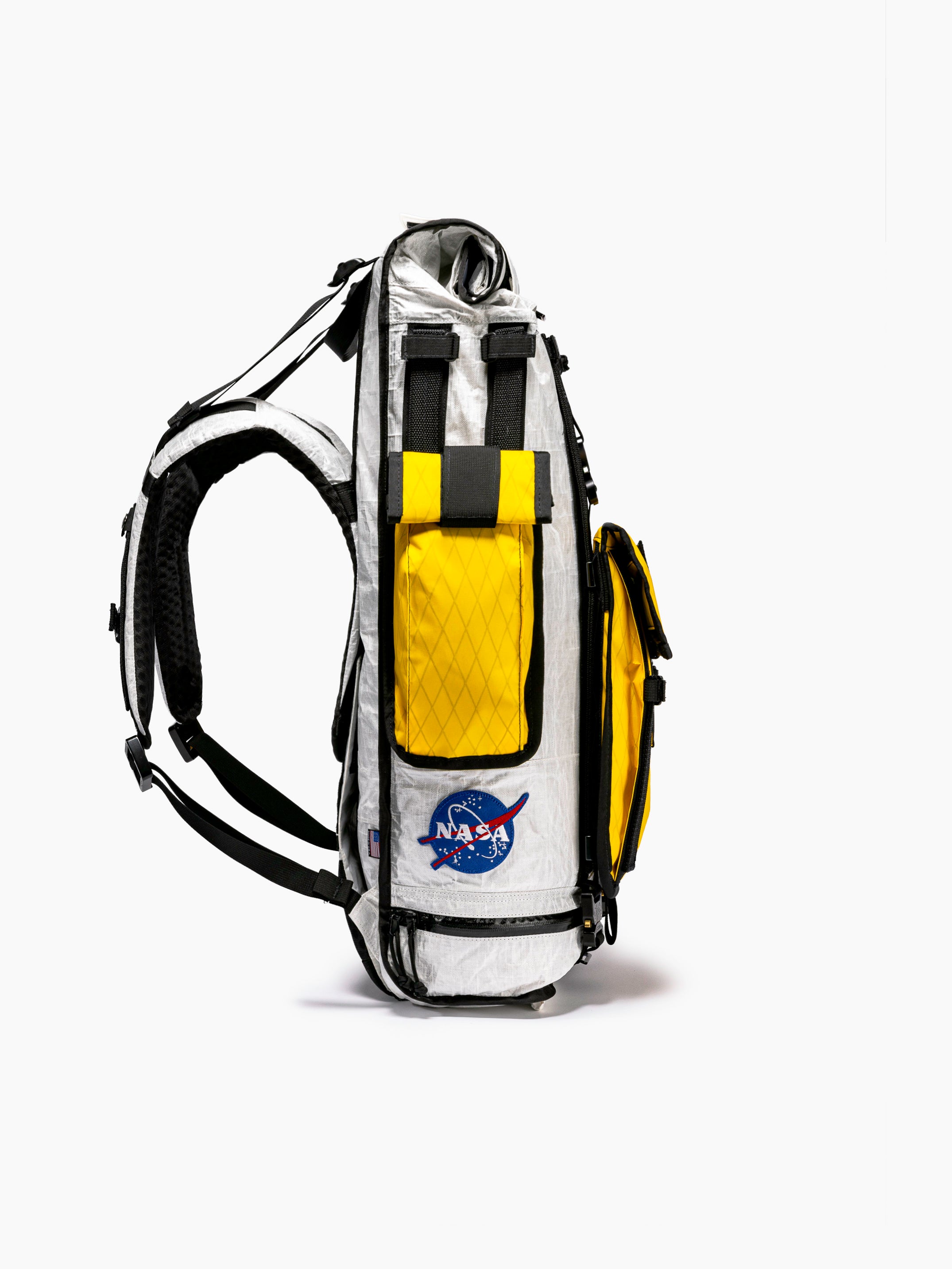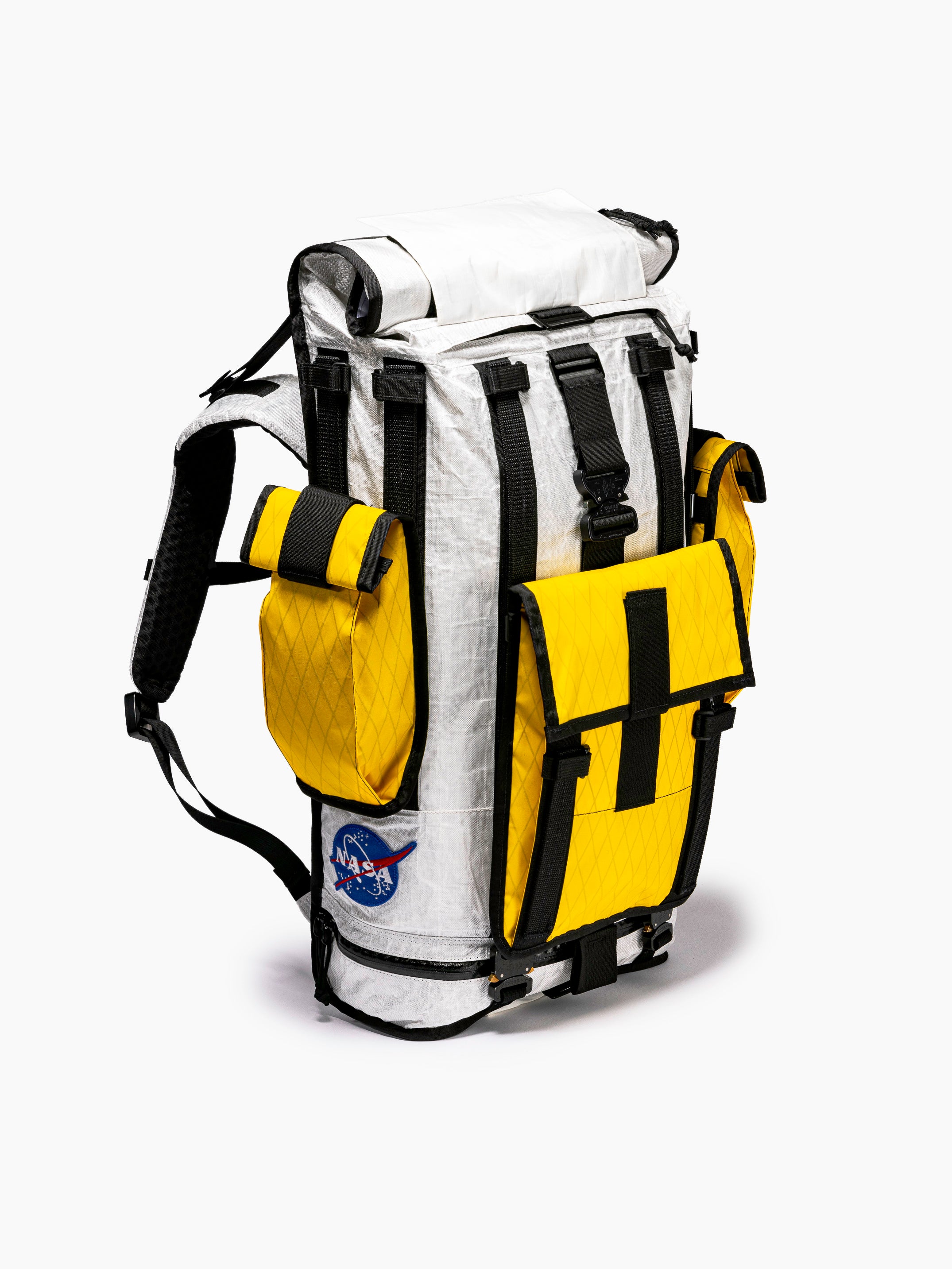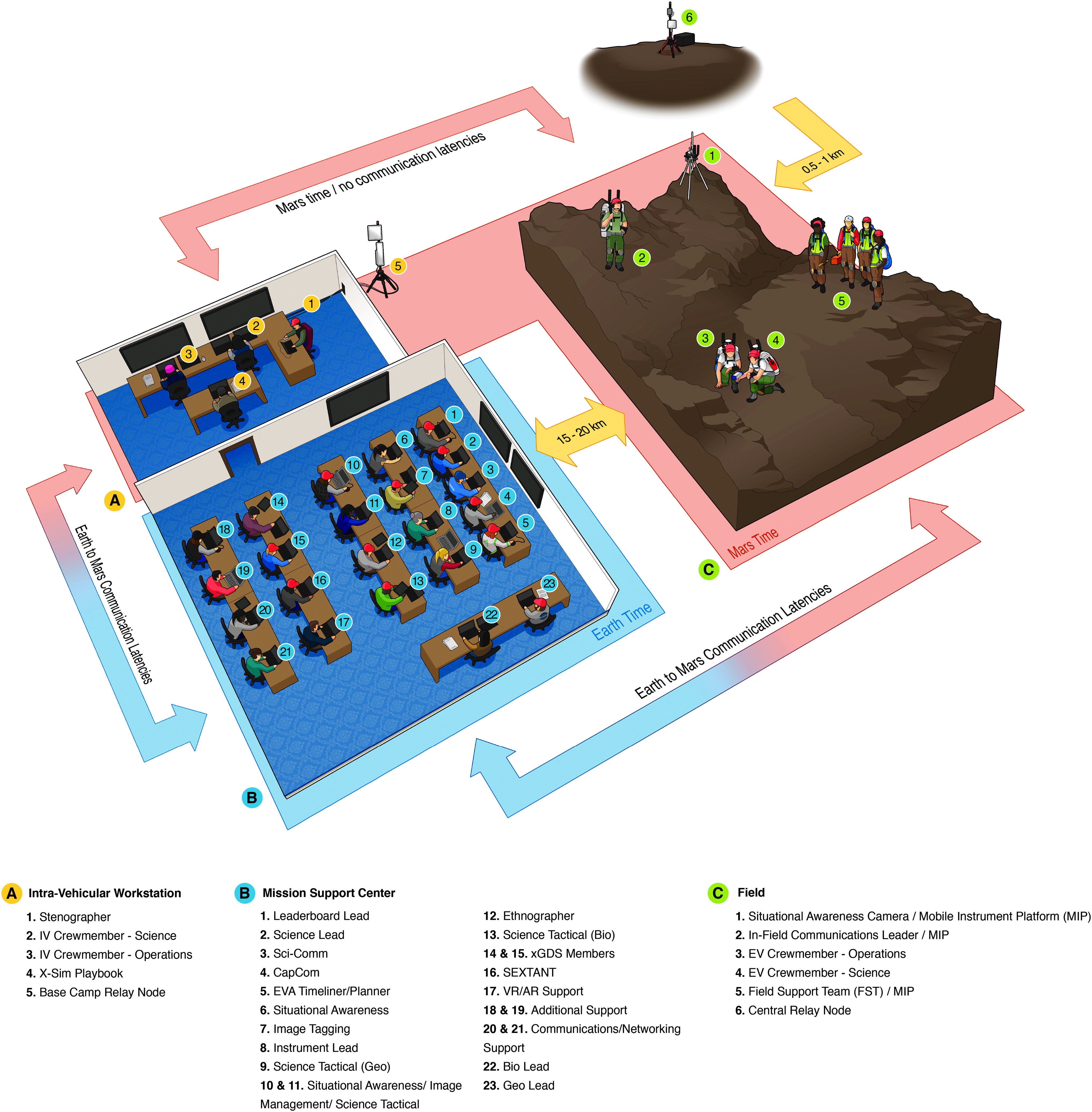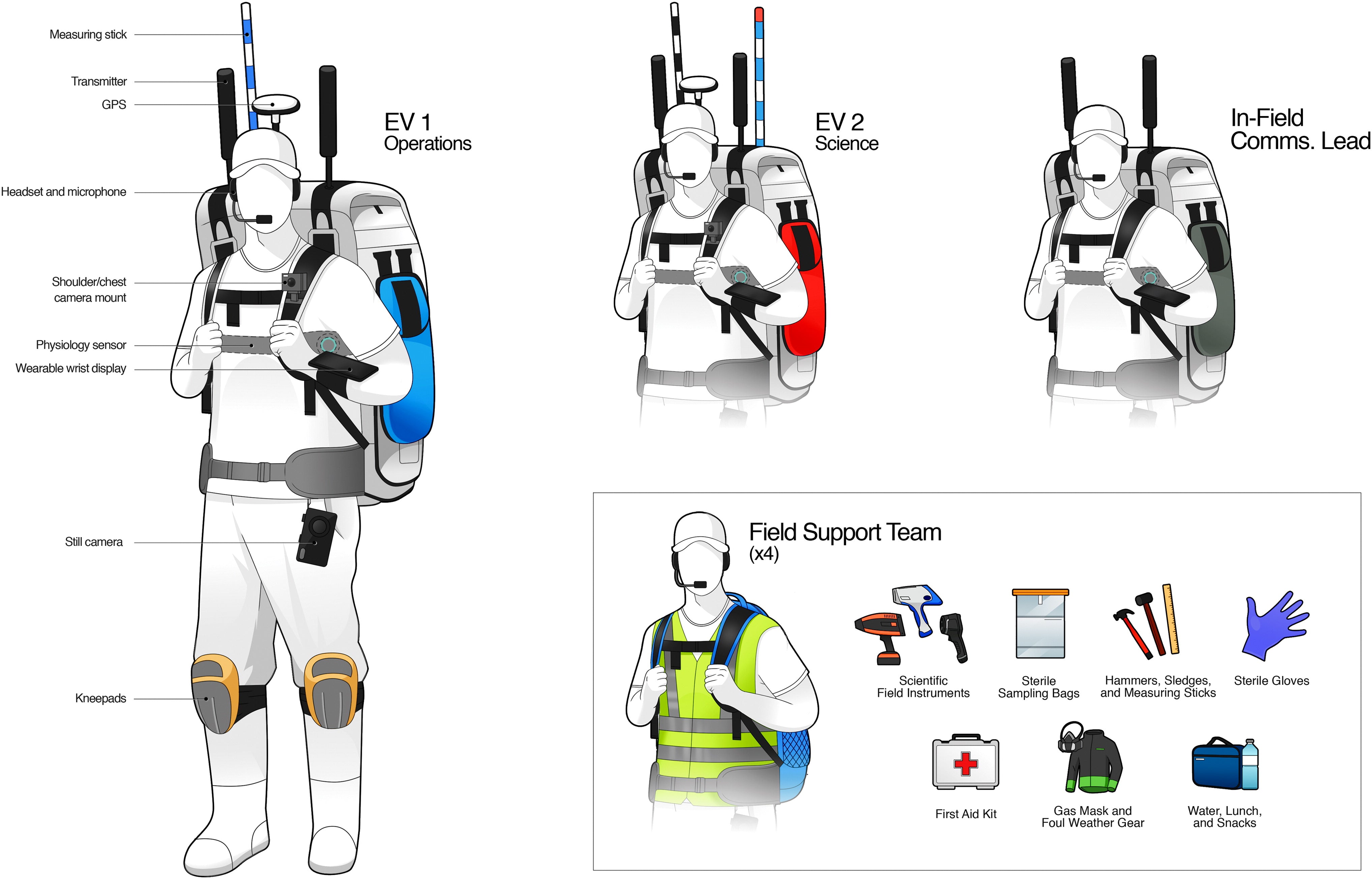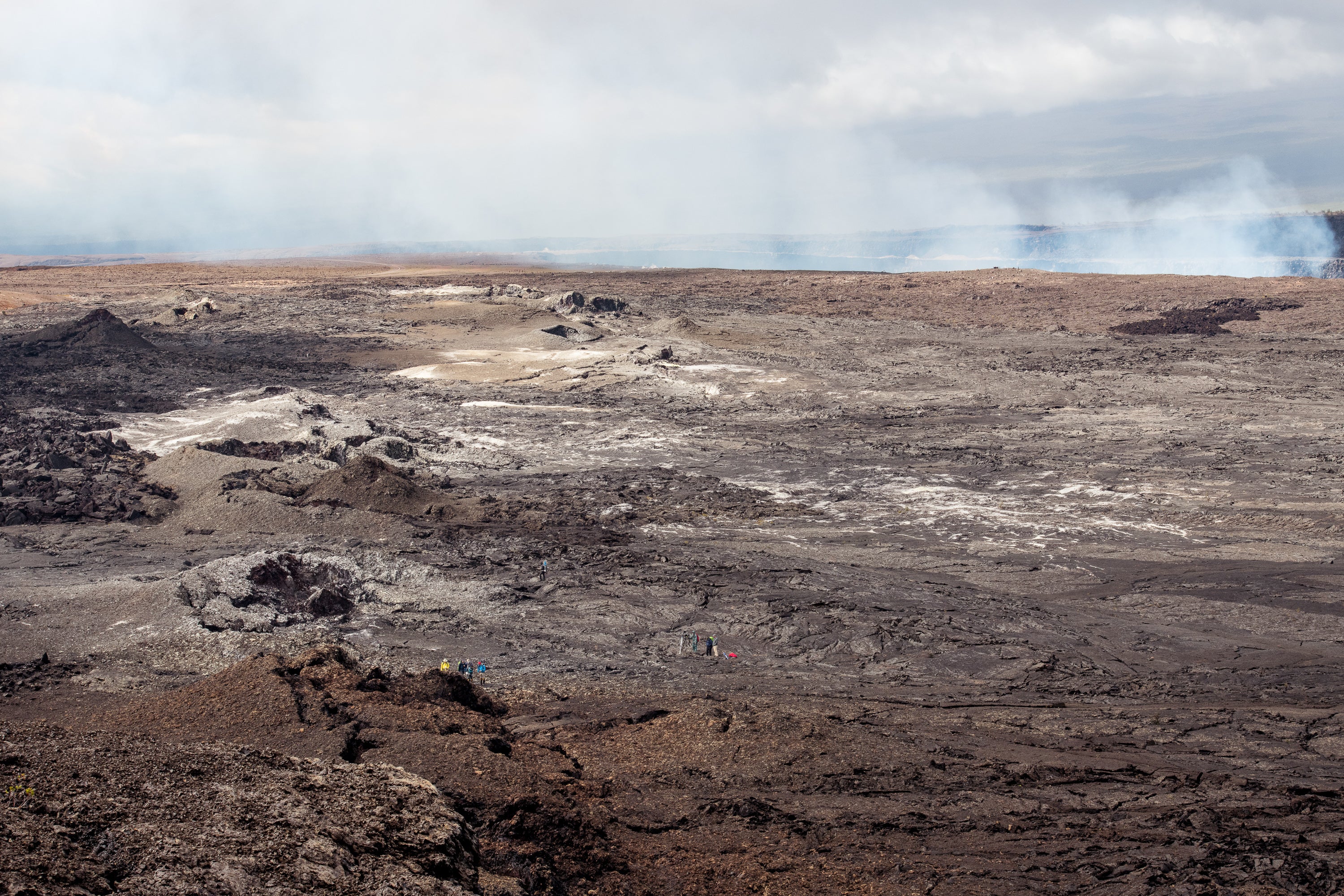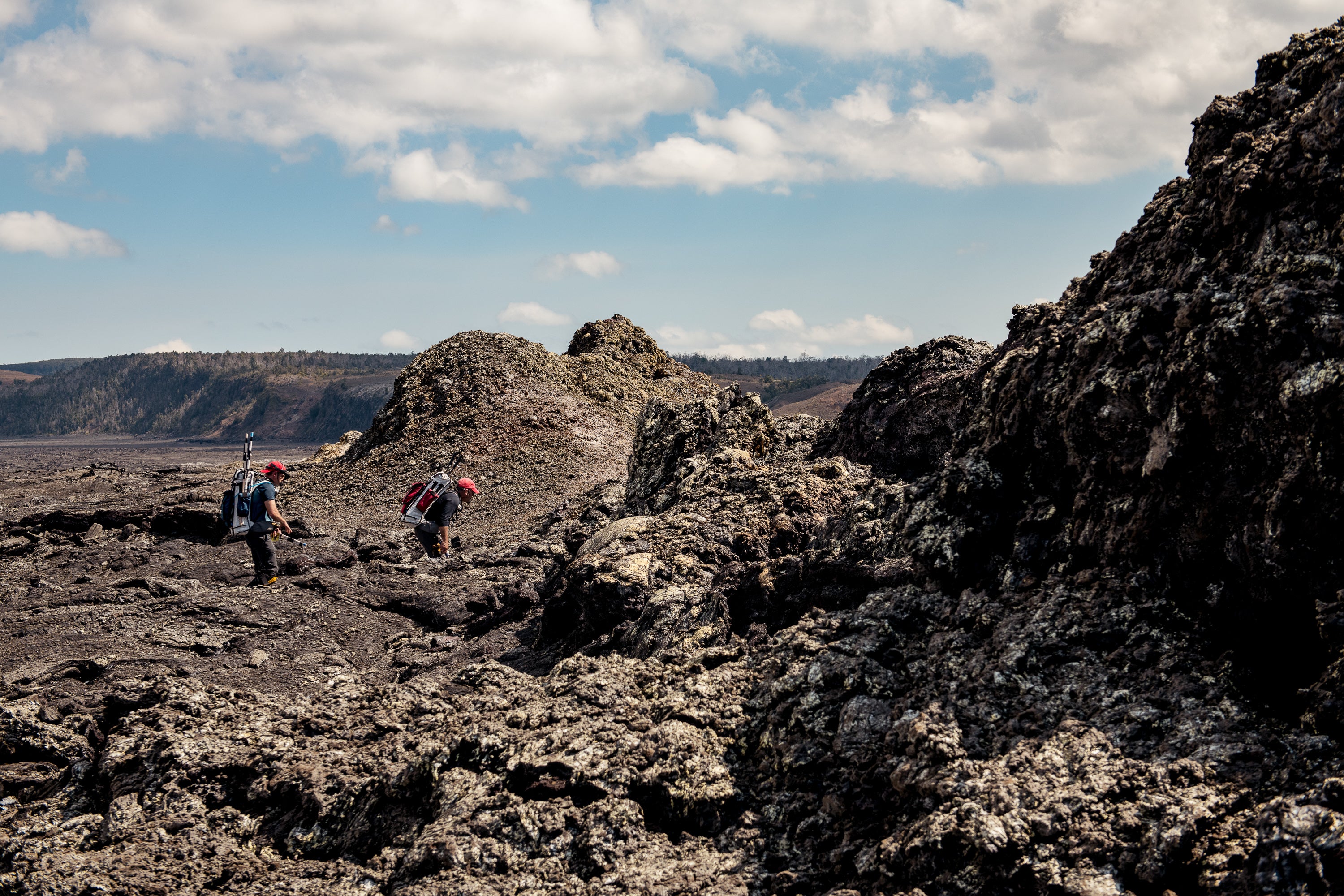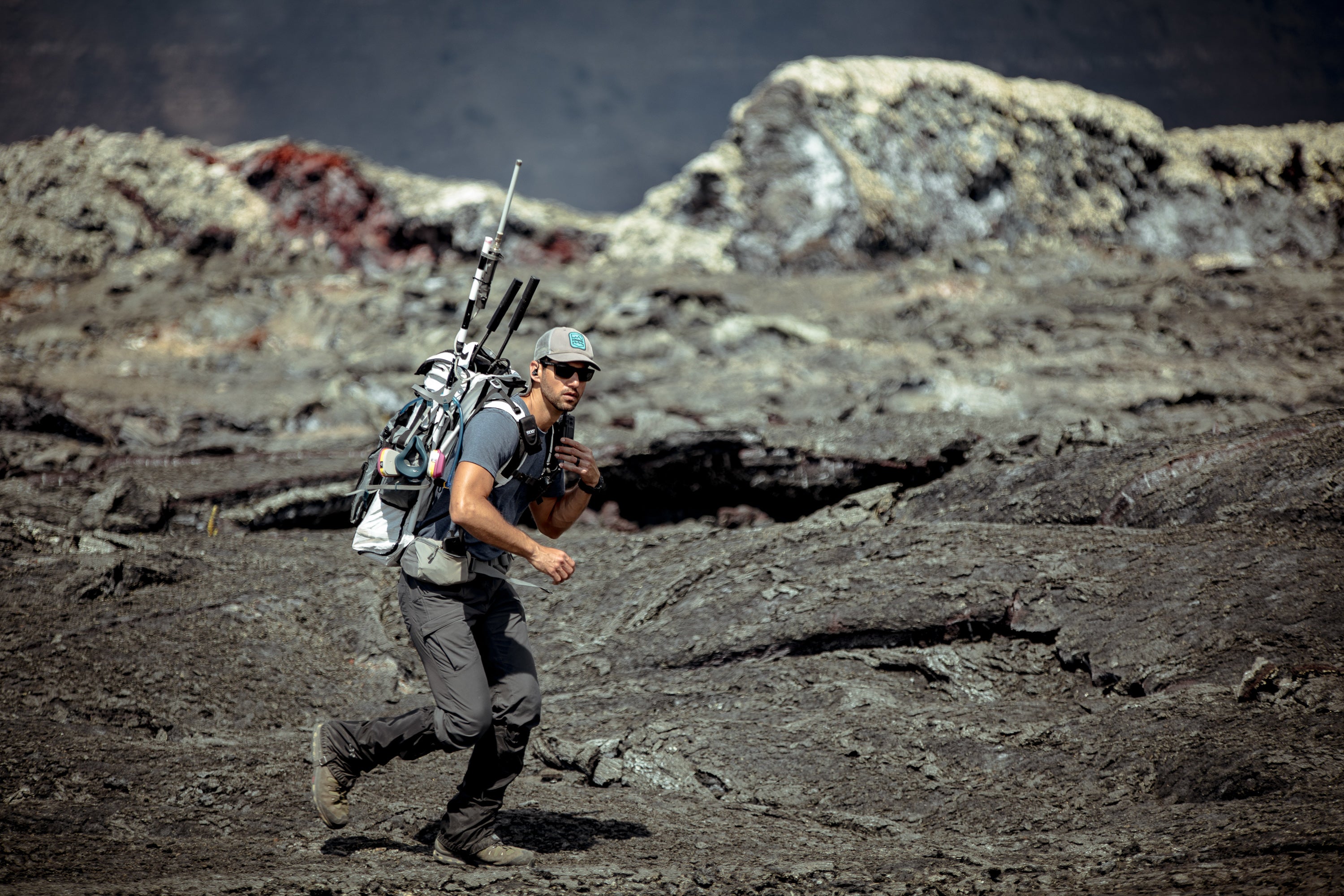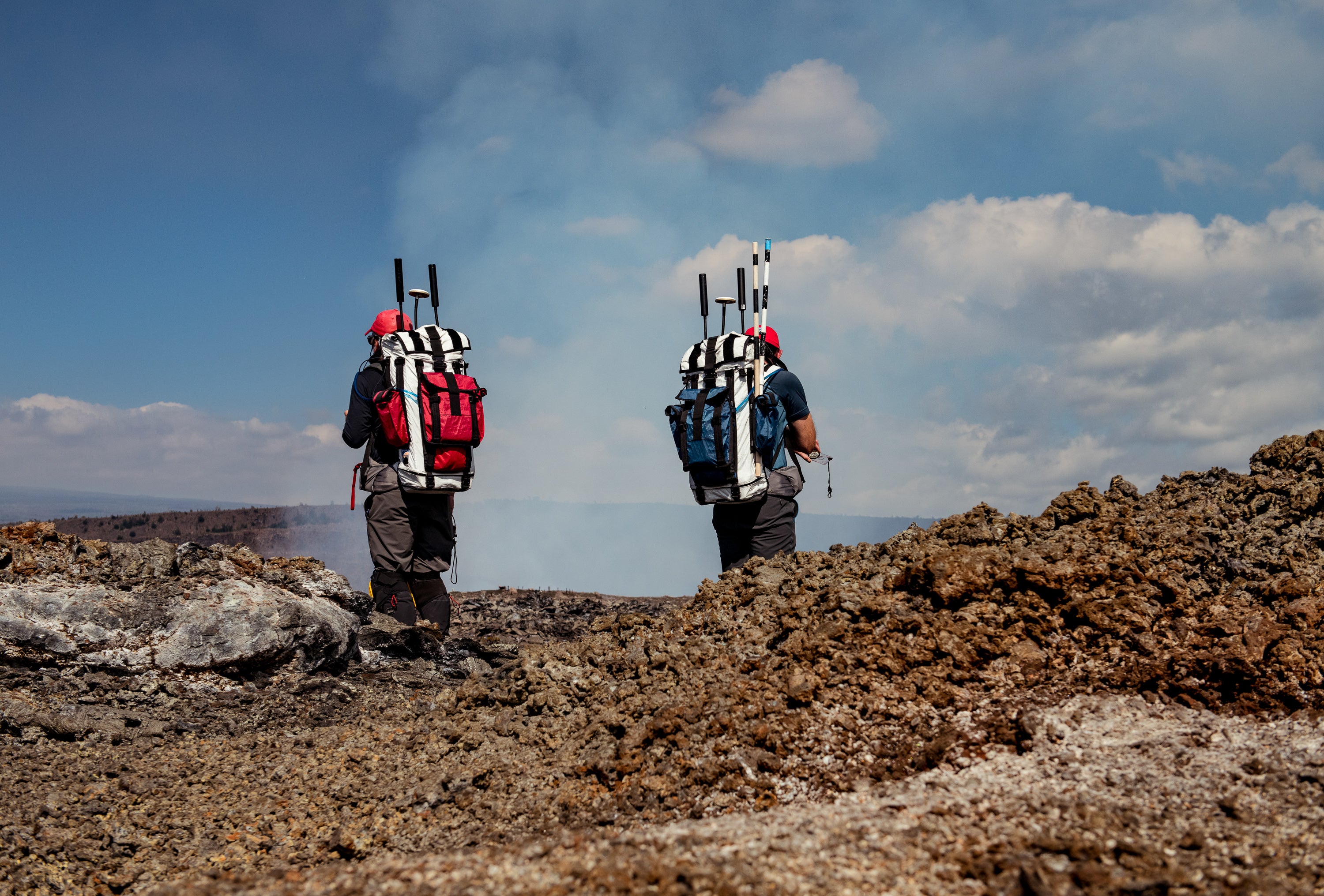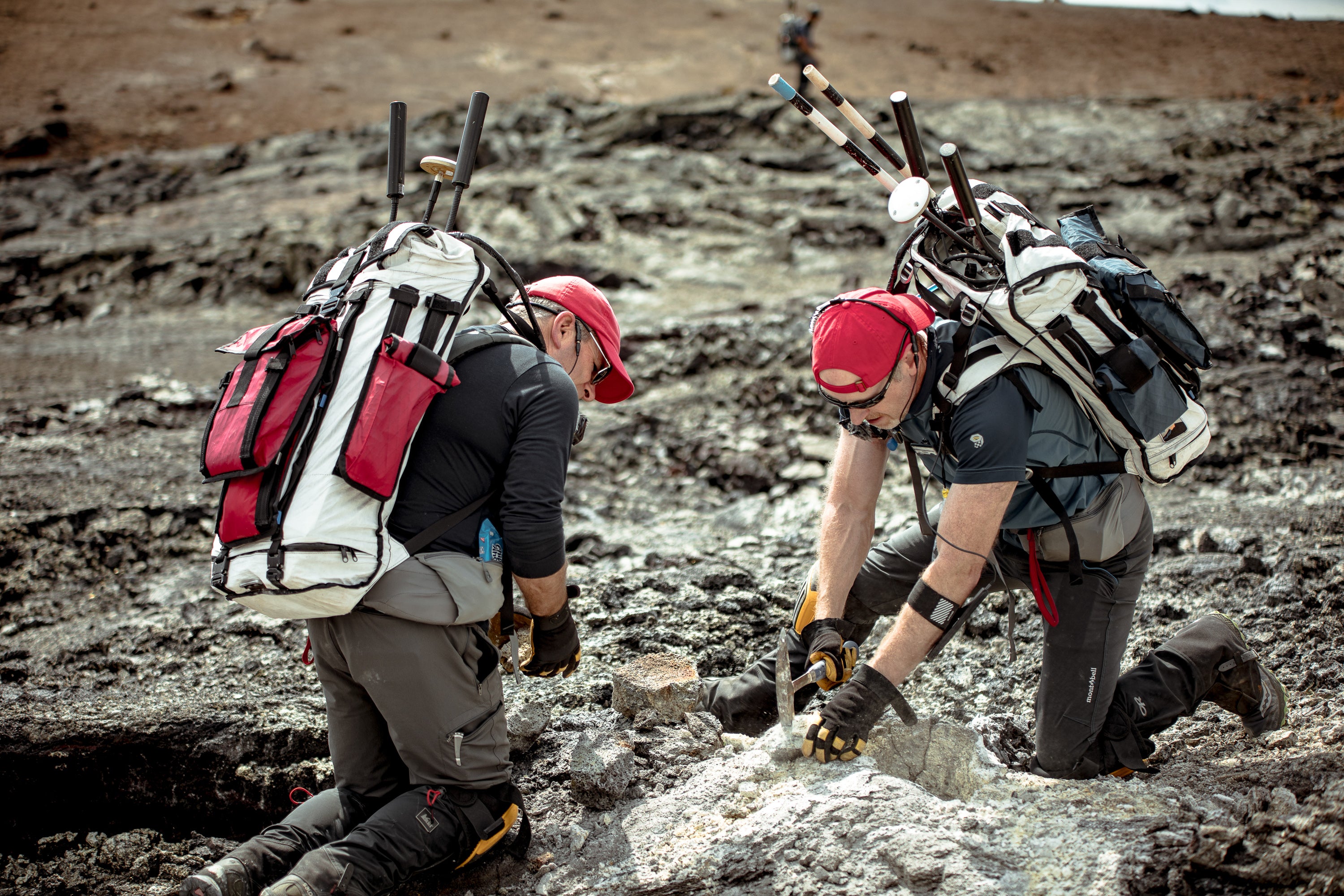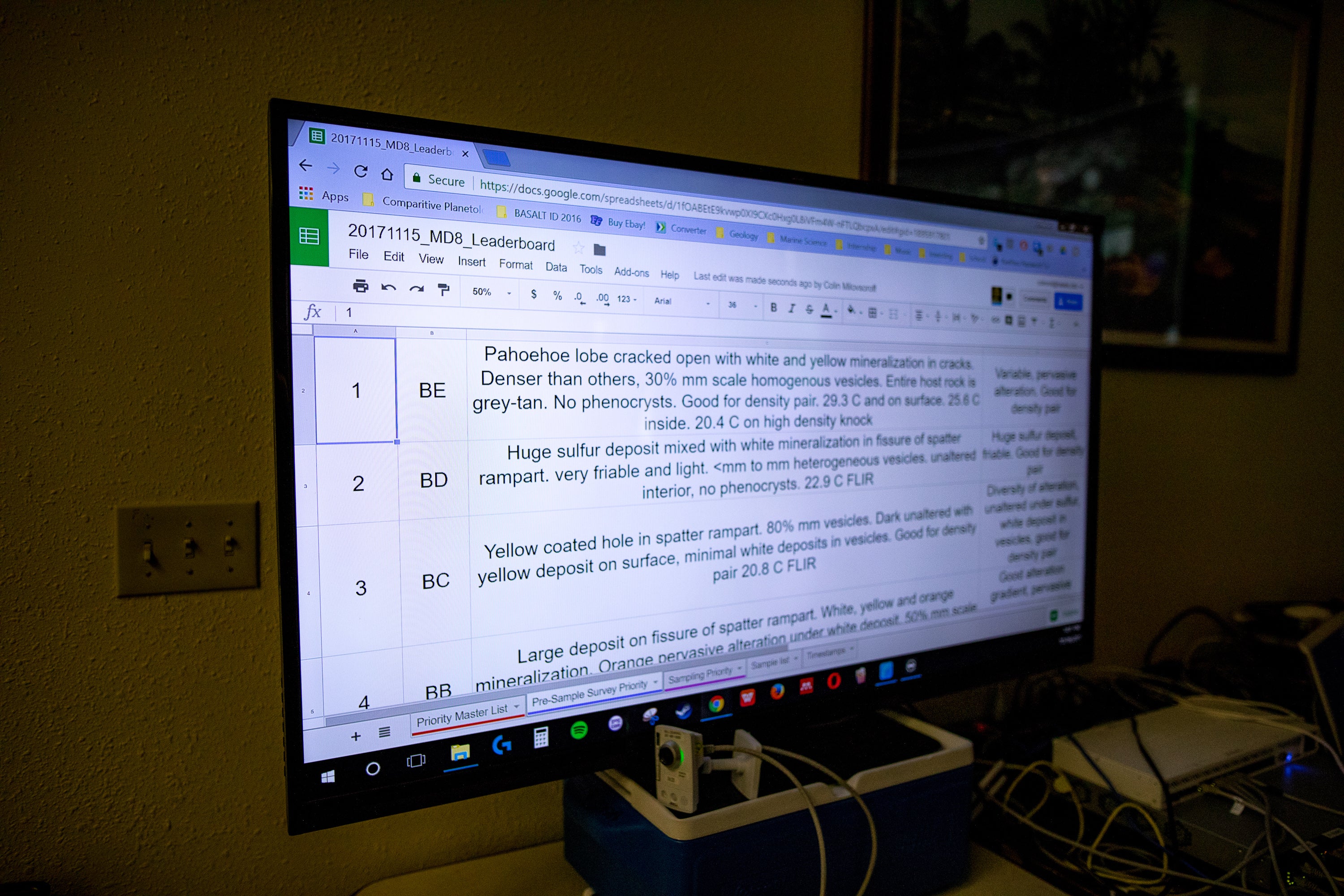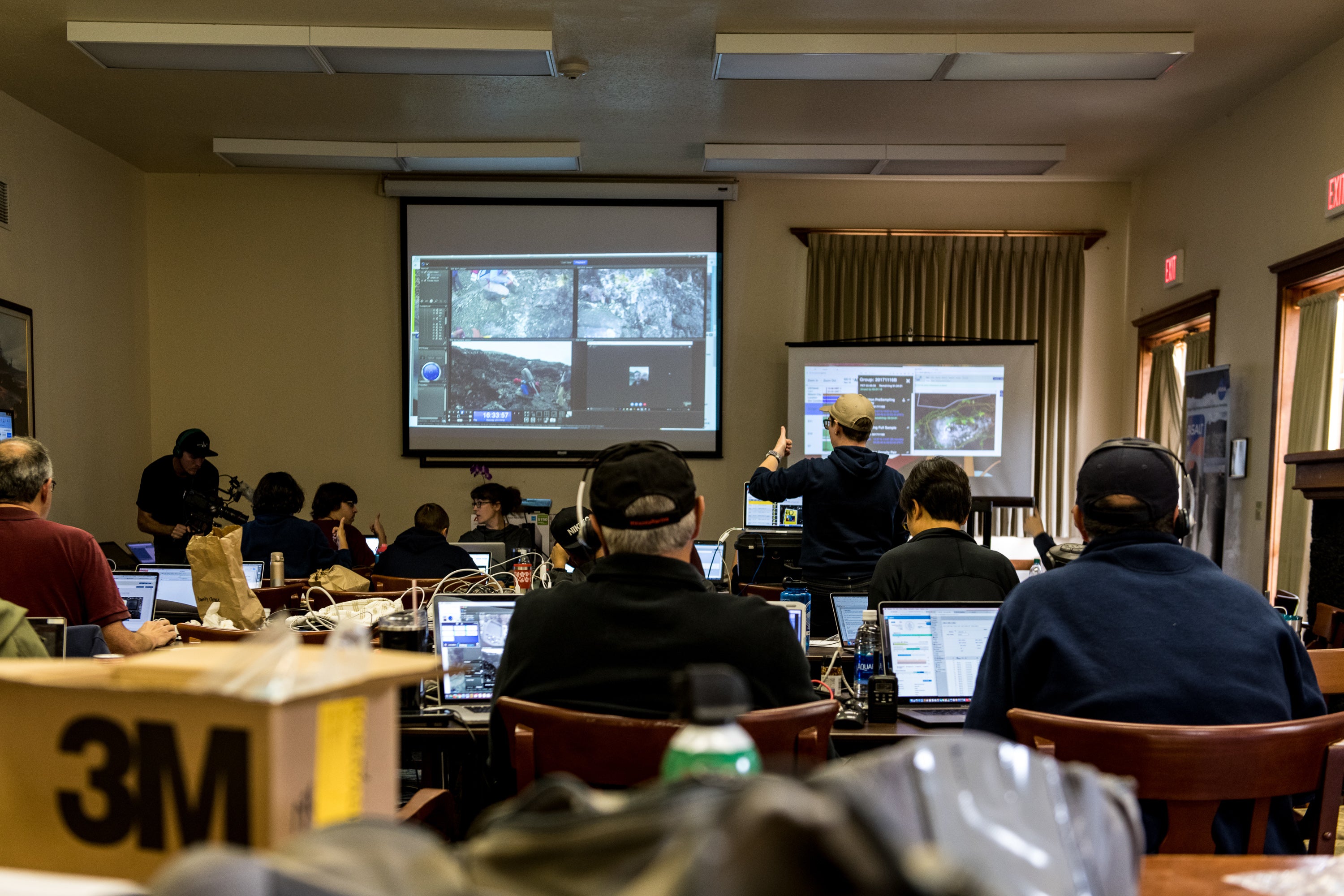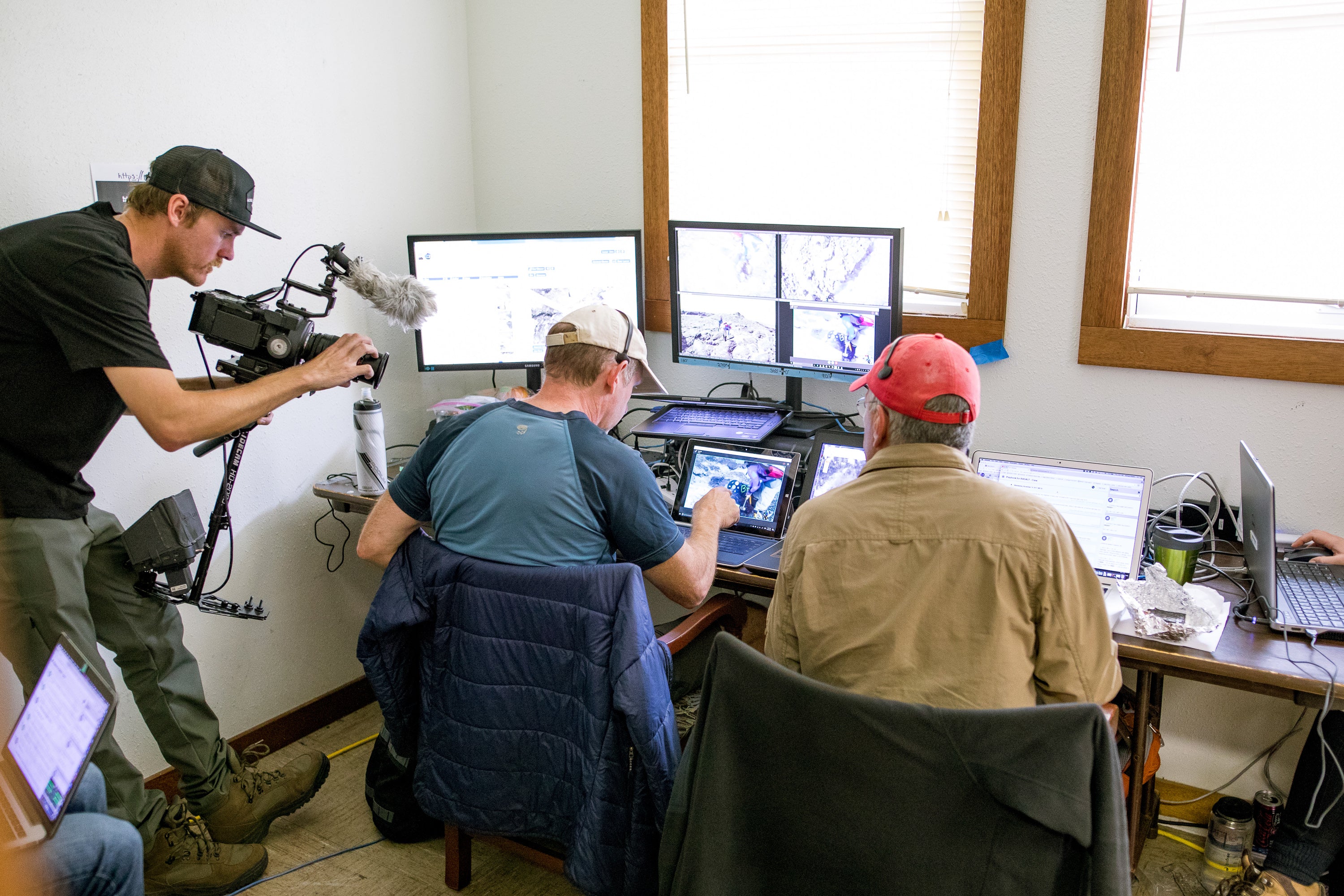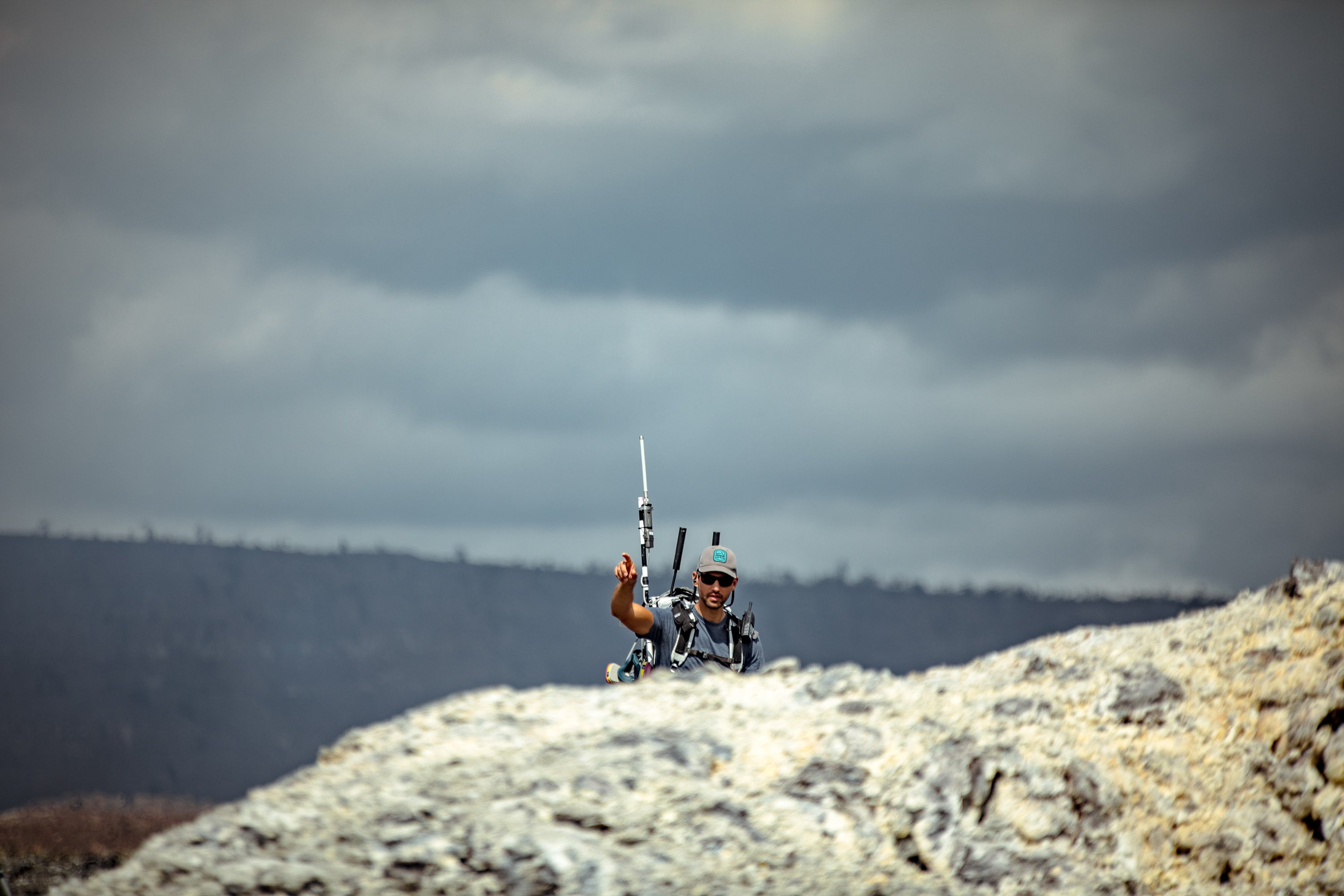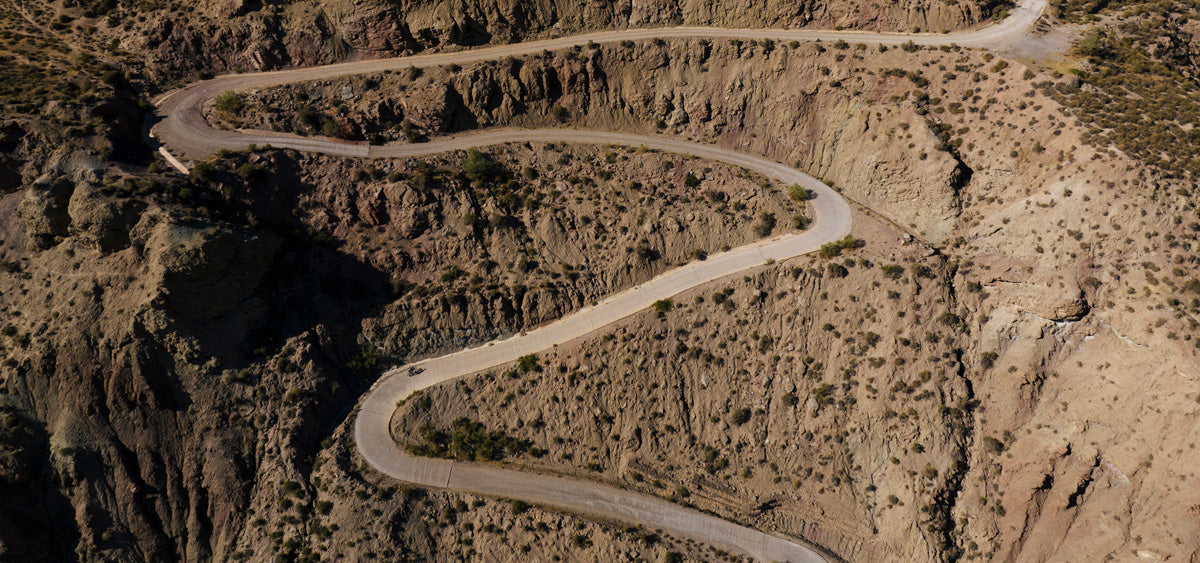Sensitive equipment, unpredictable weather, volcanic terrains, and backpacks to support a team of NASA scientists out in the field in the middle of it all. Here's how it all came together.
Video by 100 Grade / Photos by Evan Dudley and Jenny Sathngam
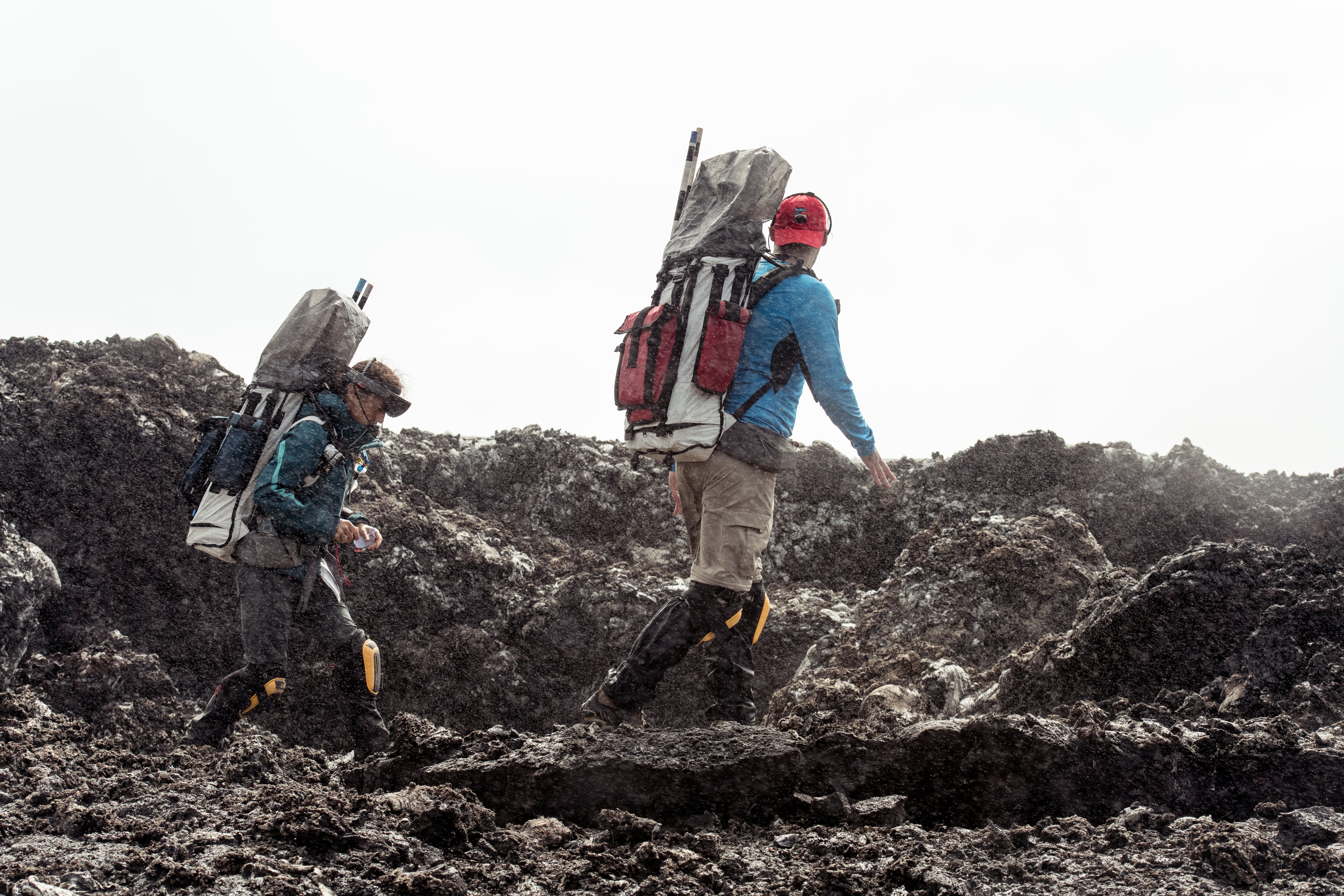
Video
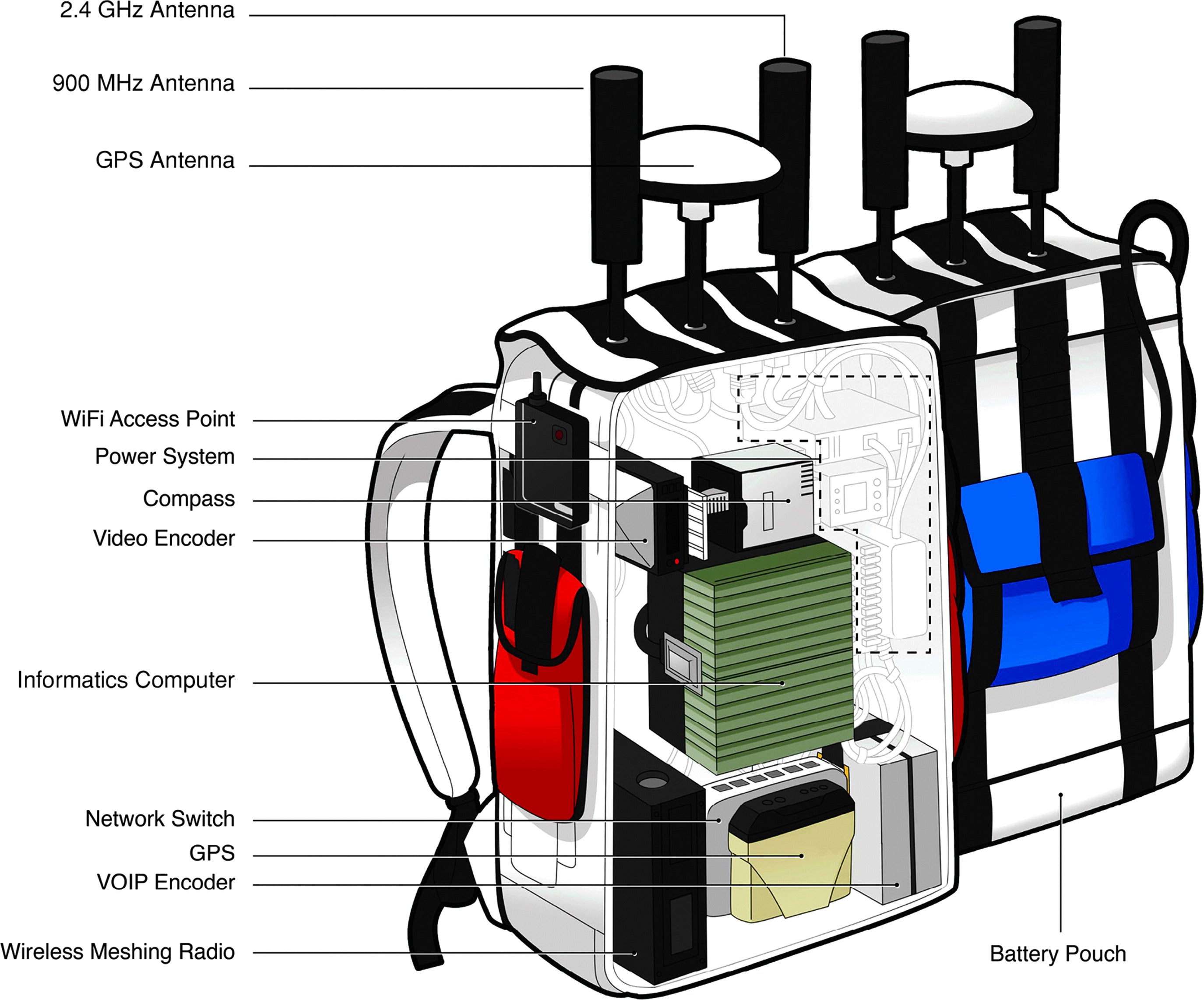
In 2016, a conversation between Mission Workshop designer Mark Falvai and NASA engineer Michael J. Miller led to making bespoke backpacks to support simulated extravehicular (EVA) analogs, or field tests, of development of conceptual operations (ConOps) of how to merge the expertise in fields like geology, biology, and other related sciences with the primarily aerospace and engineering teams in the first manned missions to Mars. The NASA mission Miller supported was BASALT, which stands for Biologic Analog Science Associated with Lava Terrains. In other words, this team seeks answers to the questions regarding potential evidence of life that could be found in volcanic materials in Mars’ geology. Over email, phone calls, and a handful of meetings, Falvai worked through what was needed to carry specialized communication equipment for NASA’s BASALT team in their analogs. This drawing is the published sketch from Miller’s report in Astrobiology Magazine:
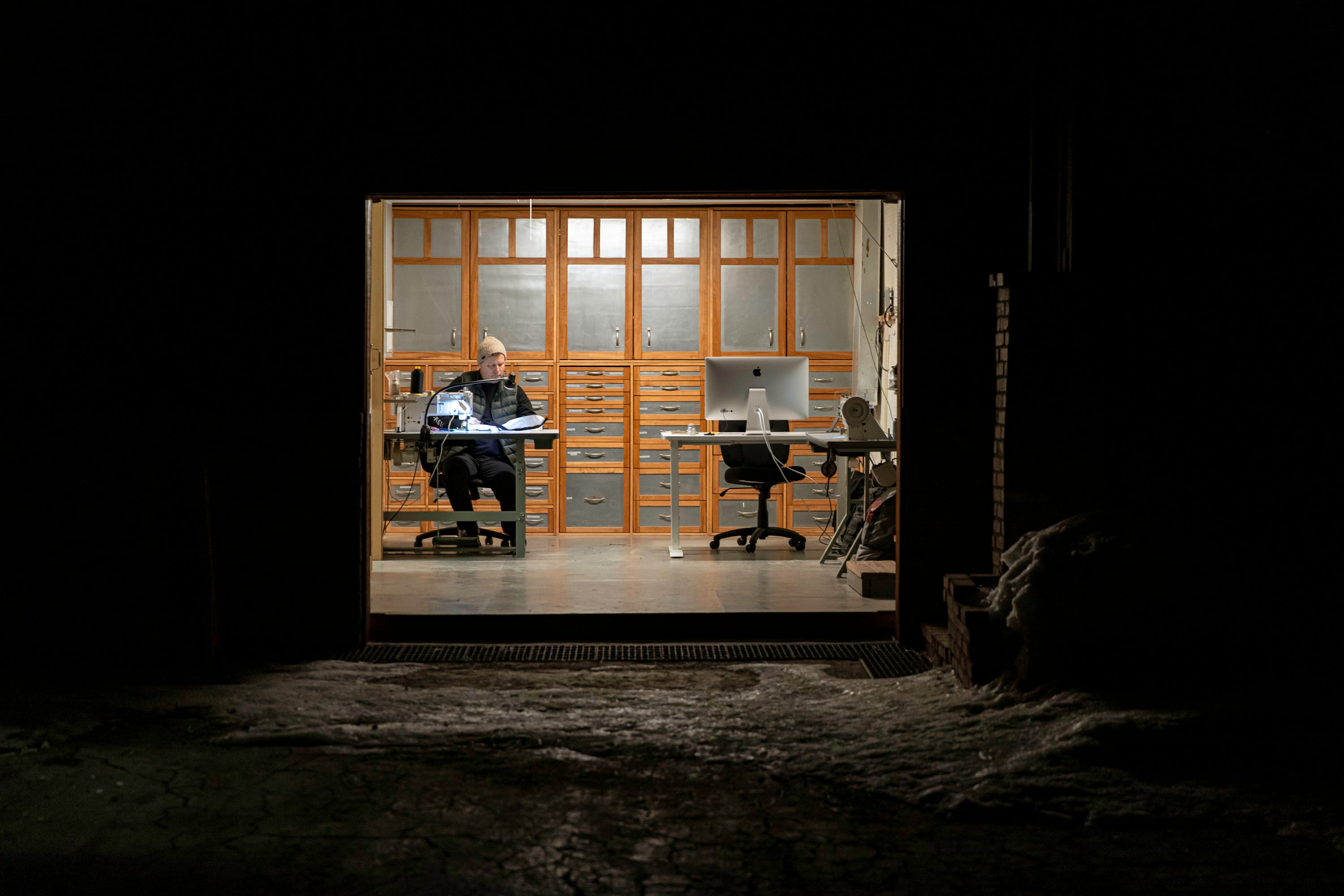
Utilizing the Arkiv® modular system and ideas from past sketchbooks, Falvai developed a new adaptable backpack harness system for BASALT’s research. The new modular telecommunications carry system provided a backpack that fits each team member, allowing for repair disassembly and providing access for efficient charging of the BASALT telecommunications system inside.
The simulated mission accounted for three teams: the astronauts on the ground (extravehicular or EVA), who communicated in real-time with the astronauts in an orbiting spacecraft (intravehicular or IVA), and mission control here on Earth, where a team of scientists was observing and analyzing all information and video collected by the EVA team. Here's how the team operated (Diagram below : Lim et al., 2019)
The backpacks were needed to host three roles on the ground, each with a corresponding color. Each backpack is adaptable to various sizes for different team members. The modular Arkiv® accessories can be swapped around, even in the field, to allow maximum flexibility during the simulated EVA.
(Diagram below : Lim et al., 2019)
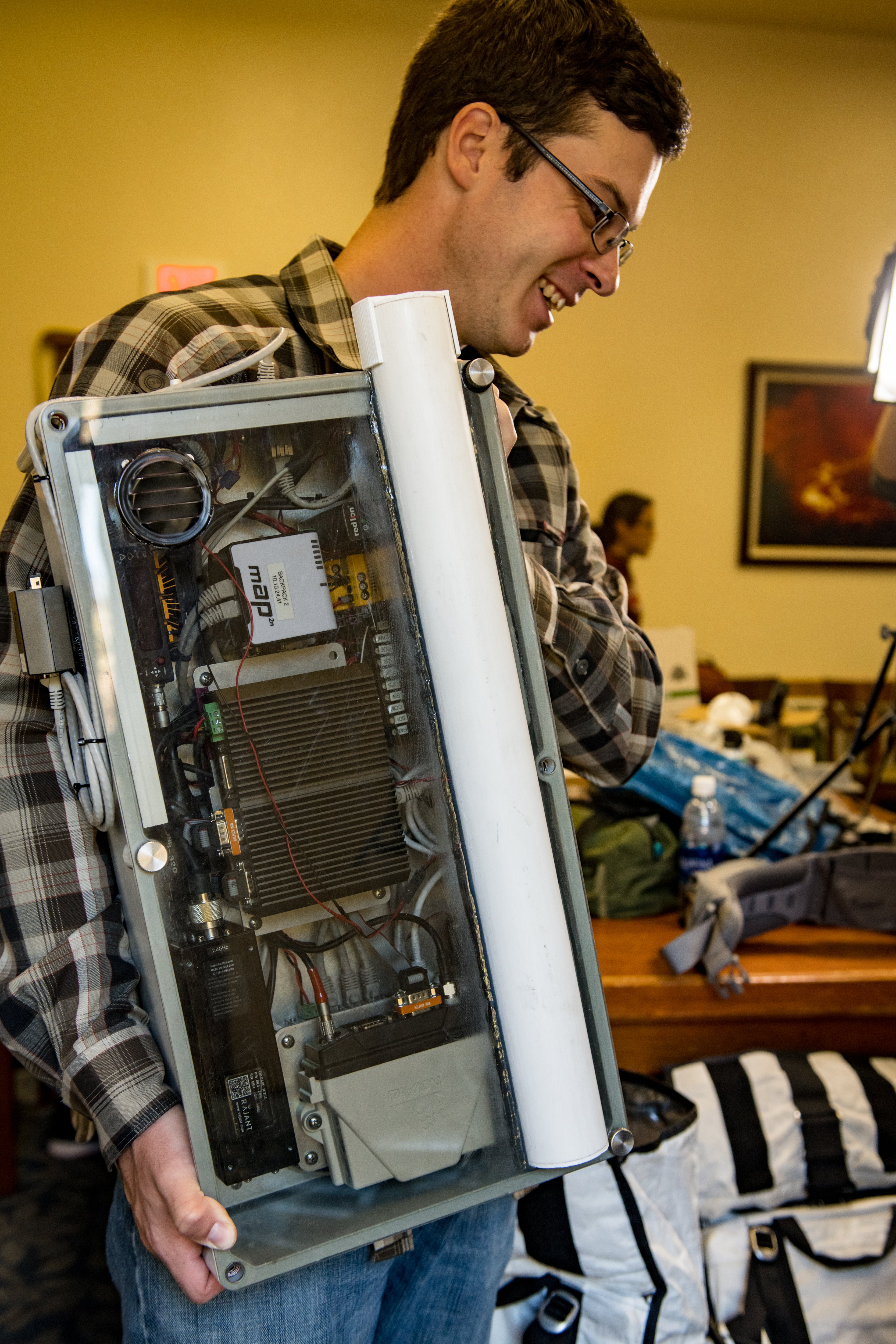
"The bags had to protect sensitive electronic equipment responsible for relaying BASALT-OnSight: an immersive, three-dimensional (3D), XR terrain modeling tool, HoloSkype: an AR technology that enables the drawing of virtual annotations on top of the real world by EV and IV crewmembers and facilitates real-time communication, and HoloSEXTANT: an AR capability that provides real-time navigation and path planning visualization overlaid on the physical world for EV crewmembers." (Abercromby et al., 2020)
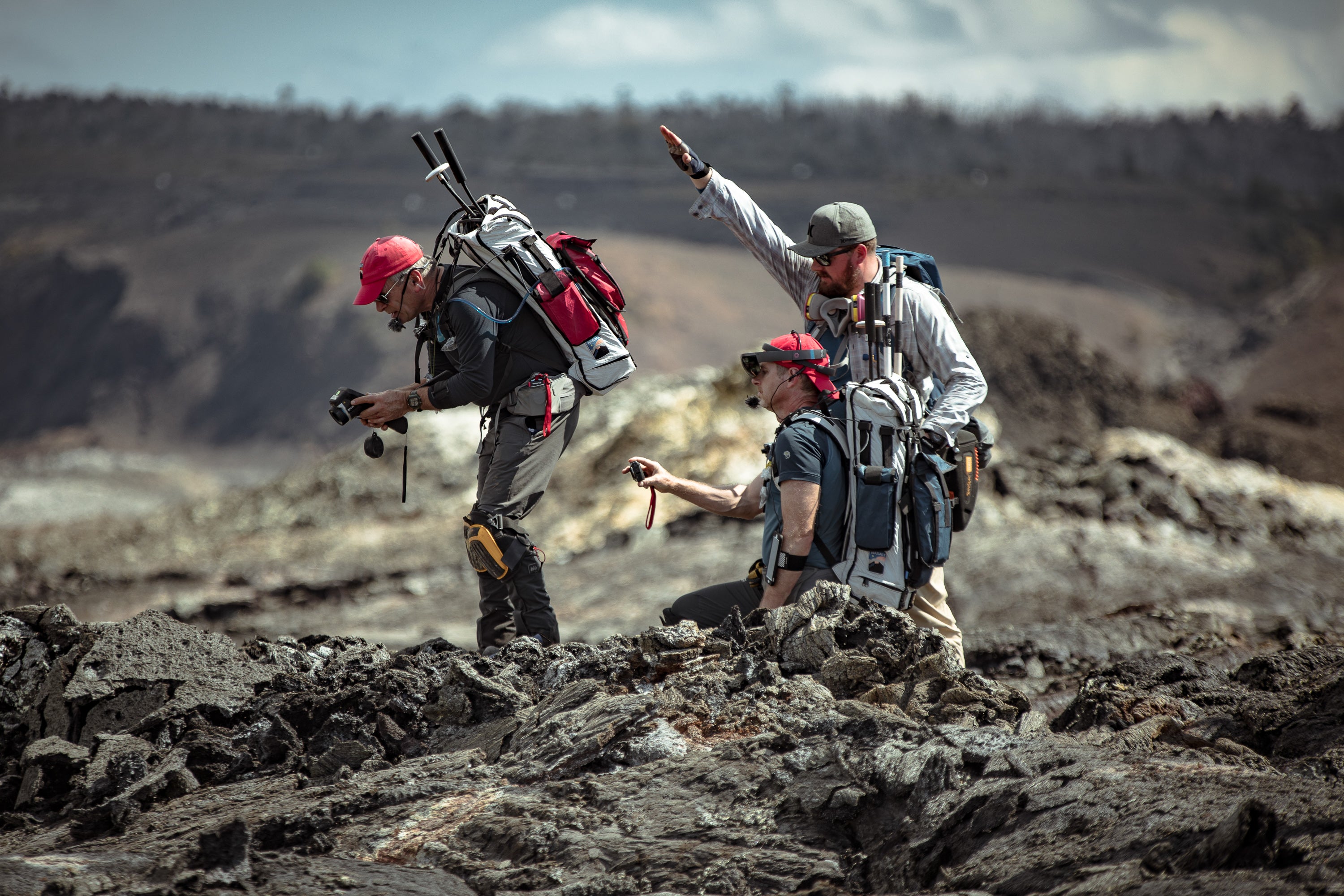
In November of 2017, Mission Workshop sent a crew to document the bag’s role in the BASALT ConOps field test with three Dyneema™ made packs. The team was exceptionally hospitable in allowing the team to accompany BASALT into the Kilauea Caldera and allowing the MW team to interview key players and observe their processes.
First, the EVA team would document a site of interest in detail that would then be relayed back to Mission Control, where specialists could vote on the priorities or actions to be taken on the second pass of that site. The priorities and directives of the Mission Control team would then be translated into specific directions for the EVA team by the IVA team, whose top priority was the safety of the astronauts. The IVA team was the only one in direct, real-time communication with the EVA team on the ground.
Then, the team members would switch roles and work through the process repeatedly to help spotlight any inefficiencies or issues in the proscribed process they would present to the eventual ground exploration team. Moving in a circuit, the EVA team would collect the samples they were directed to based on the input of the specialists on Earth, accounting for the time delay and making the best use possible of mankind’s most expensive and risky sojourn to date.
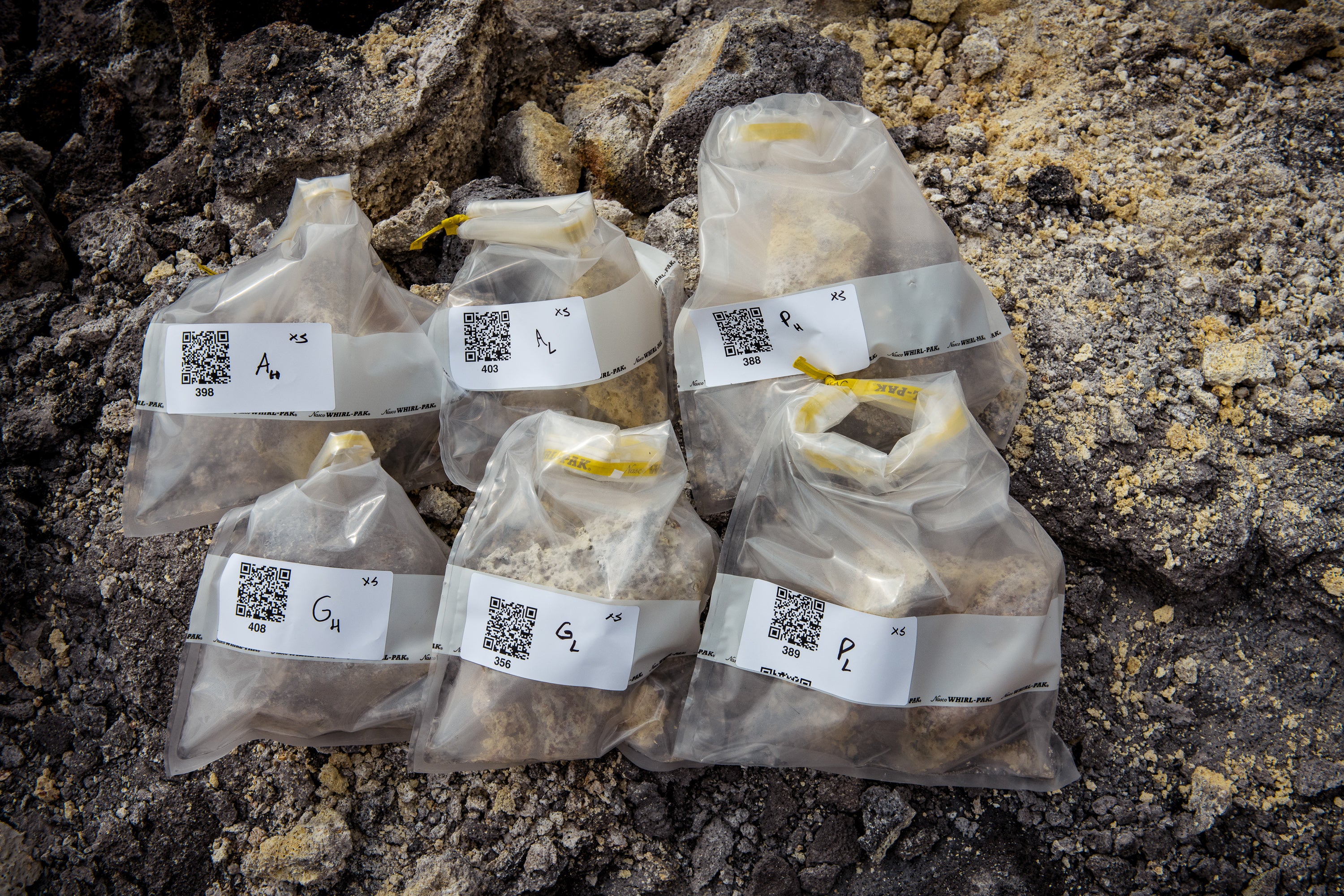
When Apollo 11 collected moon samples in 1969, the only men in the room were connected to the engineering and aviation aspects of the mission. Those samples resulted in decades of research here on Earth. However, what if other samples were collected? BASALT’s goal is to bring those material and biology specialists into the room without jeopardizing the safety of the astronauts ~34 Million miles away while increasing the chances of getting the best sample for research purposes. Research that may be influential in Mars policy or clues to the formation of the solar system or beyond.
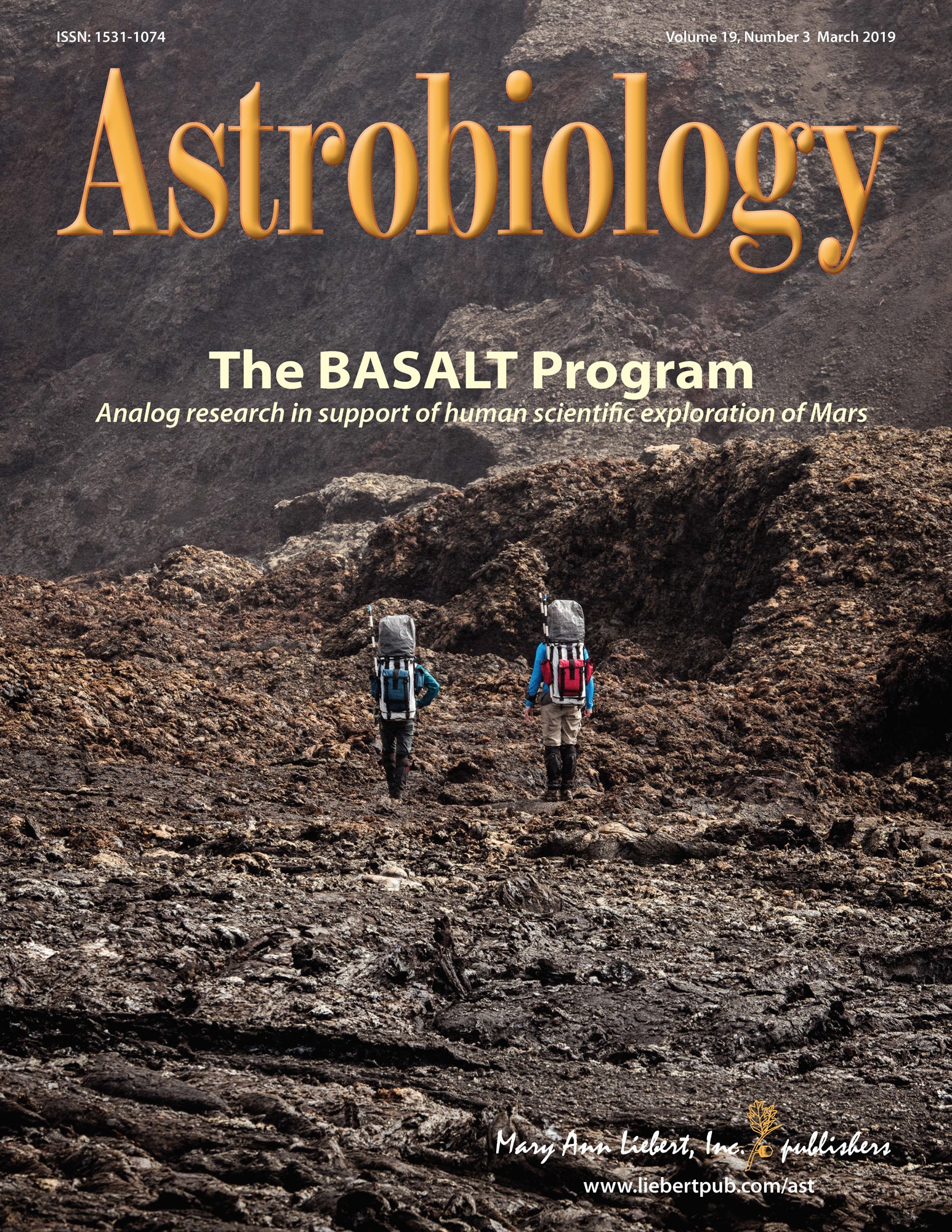
To learn more about the research supported by these packs, check out the special issue of Astrobiology magazine dedicated to the NASA BASALT Project here.
Sources:
Abercromby, A. F., Eppler, D., Litaker, H. L., Abercrombie, S. P., Abercromby, A. F. J., Anandapadmanaban, E., Beaton, K. H., Berner, J., Bowersox, K., Brady, A. L., Carberry, C., Chappell, S. P., Davis, K., Deans, M., Drake, B. G., Frank, J., & Gaines, D. (2020, June 17). Mission enhancing capabilities for science-driven exploration extravehicular activity derived from the NASA Basalt Research Program. Planetary and Space Science. https://www.sciencedirect.com/science/article/abs/pii/S0032063320300106
Lim, D. S. S., Abercromby, A. F. J., Kobs Nawotniak, S. E., Lees, D. S., Miller, M. J., Brady, A. L., & Miller, M. J. (2019, March 6). The BASALT Research Program: Designing and Developing Mission Elements in Support of Human Scientific Exploration of Mars. Astrobiology Magazine. https://www.liebertpub.com/doi/10.1089/ast.2018.1869
Miller, M. J., Miller, M. J., Santiago-Materese, D., Seibert, M. A., & Lim, D. S. S. (2019, March 6). A Flexible Telecommunication Architecture for Human Planetary Exploration Based on the BASALT Science-Driven Mars Analog. Astrobiology Magazine. https://www.liebertpub.com/doi/10.1089/ast.2018.1906


